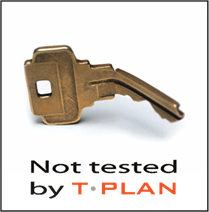The Opportunities for the Future of Test Automation
 The opportunities in this space right now are tremendous, and with the plethora of tools and services being provided at the moment, it is an exciting industry to be part of.
The opportunities in this space right now are tremendous, and with the plethora of tools and services being provided at the moment, it is an exciting industry to be part of.
With this sentiment in mind, I believe that we will continue to see increased collaboration and communication between different companies, and therefore technologies when testing projects are being carried out for customers. We have heard for some time now about grey box testing (essentially a combination of black-box and white-box testing), and I believe that we shall see an explosion of these sort of testing practices, being more and more deployed in test environments. For some this will be a use of a combination of different toolsets, whereas for others we will see developers and testers alike working on getting a coherent test structure, utilising a combination of different techniques, data sets and of course tools.
For example: take the case of a company that is having to produce a product that now has to function in not just a windows environment, but in a mobile and Linux one also. Users expect a unique but consistent experience across the different technologies, but above all, the present-day consumer expects quality and security. We have become failure intolerant when using technologies that are no longer emerging, and have become intertwined with everyday life.
What this means for the software testing industry is the procurement of a selection of tools to test systems across a wide range of different environments. Historically we have been able to control the testing into fairly neat packages, and as the tests conducted on the different environments, all used similar hardware and networks etc. E.g. tests carried out against different operating systems of Windows XP, Vista, and 7 etc. However in the mobile and tablet world, not only does the hardware, and networks need to change, but also the nature of the tests being deployed, as you are now in a world of widely different operating systems etc. Last but not least, you add Linux, Android and Chrome into the mix alongside the traditional desktop testing, and you have a whole range of tools that have to act in harmony.
Automating the Future
 Coming back to the grey box testing ethos it means that in the future we can expect testing automation tools to have a firm footfall into the development of the systems under test, and the data deployed end to end within them. Test automation tools in this rapidly changing landscape need to be positioned at the black box or user level, as after all, we need to make sure that the end-user is getting the same unique and consistent experience, whatever the system or device they are running. What I mean by unique is that an Apple user still expects a Mac look and feel to their application, as does a Windows user also expects a Windows look and feel to their application. I.e. a unique experience, but consistent functionality across the different platforms.
Coming back to the grey box testing ethos it means that in the future we can expect testing automation tools to have a firm footfall into the development of the systems under test, and the data deployed end to end within them. Test automation tools in this rapidly changing landscape need to be positioned at the black box or user level, as after all, we need to make sure that the end-user is getting the same unique and consistent experience, whatever the system or device they are running. What I mean by unique is that an Apple user still expects a Mac look and feel to their application, as does a Windows user also expects a Windows look and feel to their application. I.e. a unique experience, but consistent functionality across the different platforms.
The positioning of these tools at the black box level is also important as the traditional object-oriented automation tools, offered by the large providers, cannot keep pace with the wide range of technologies. The rapid development interaction required to make sure that objects are embedded at the correct code level, to ensure workable automating solutions, is no longer the intelligent solution in a world now of many different devices and platforms.
Of course, in these situations, environment agnostic tools built on platforms like Java, which therefore function across multiple different systems, are ideally placed to drive the test automation. Indeed our test automation tool T-Plan Robot with its open architecture can readily achieve this level of synergy by controlling multiple toolsets and interacting with data feeds. Indeed one can truly say that image-based testing tools as a whole, have become more and more integrated into the full test process and the system development life cycle.
To satisfy the number and diversity of systems under test, the traditional demarcation lines between toolsets, have become blurred. I believe that a company can no longer consider just one suite of tools from a traditional vendor, but more a variety of tools from different vendors to achieve blanket coverage for their testing activities.
This article featured in the October 2011 Test Magazine.



